Our experimental set-up in SE2-230T is shown below. Some of our recent results are also summarized along with information of the relevant publication.

Journal of Applied Physics, 120, 123305, 2016
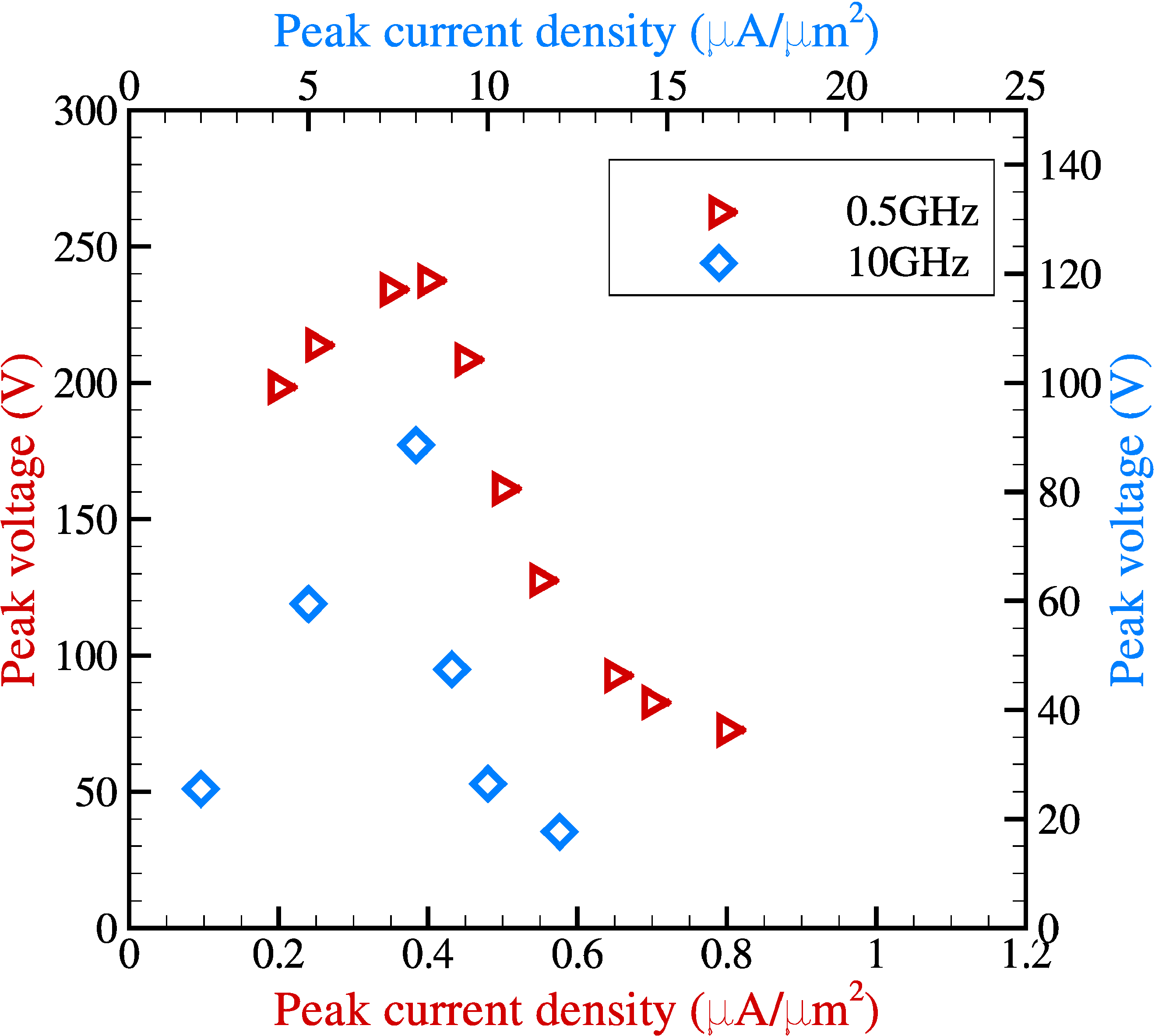
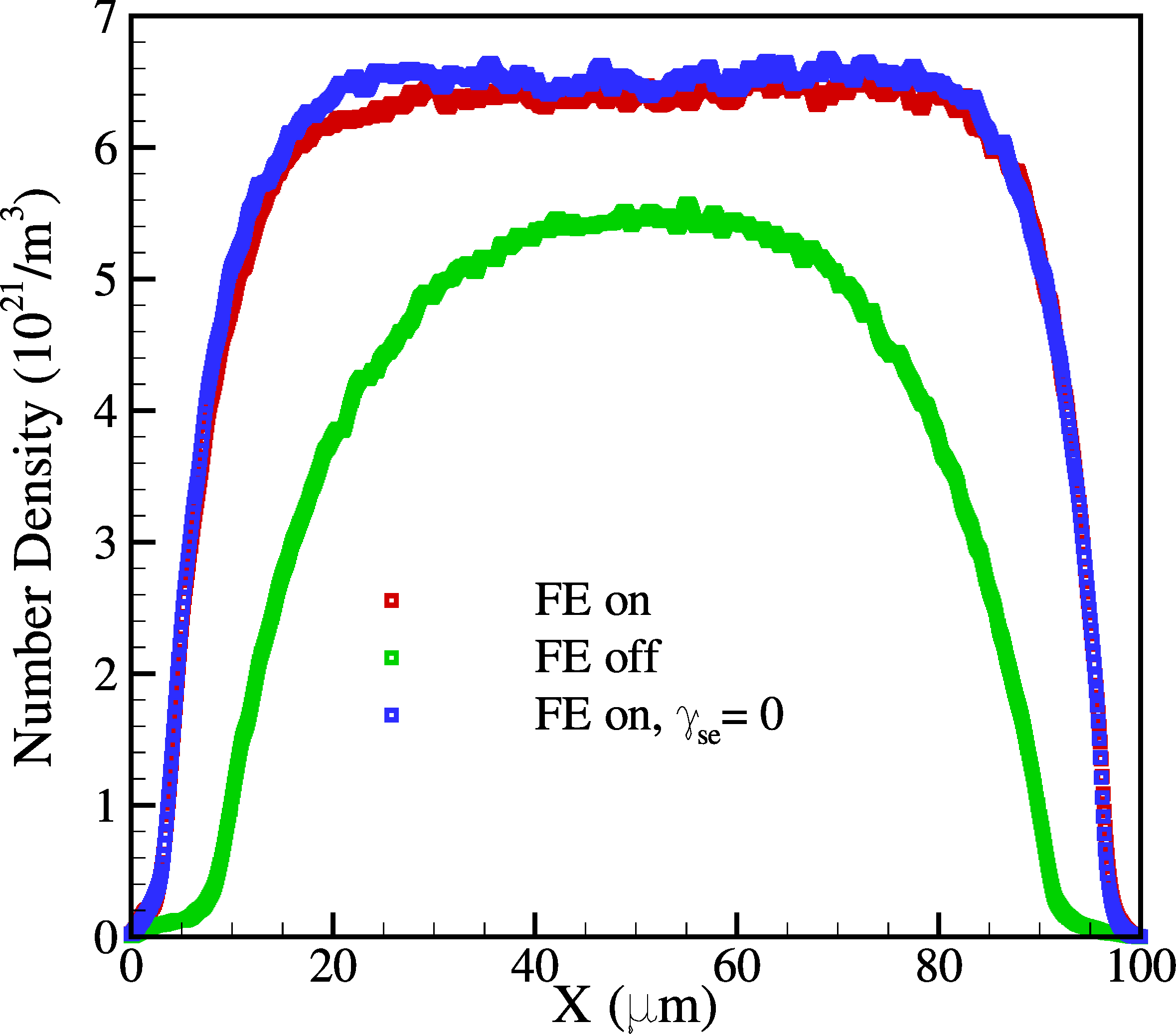
The operating modes of microwave microplasma devices integrated with field emitting cathodes are studied using one-dimensional particle-in-cell with Monte Carlo collision (PIC-MCC) simulations. The PIC-MCC simulations predict operation in two modes—an a-mode characterized by a positive differential resistance with negligible influence of boundary processes and a c-mode with significant field-induced electron emission. PIC-MCC results are presented for two representative 0.5 GHz argon microplasmas operating in the a and c modes. The field emission-induced transition to c-mode modifies the electron number density profiles in the sheath apart from leading to a higher contribution of conduction current in the sheath. The interpretation of electrical characteristics using time history of voltage and current demonstrates that the microplasma device impedance decreases as a result of the thinner sheath. It is also shown that the presence of field emitting cathodes leads to lower power requirements (about 64% of the case presented without field emission) to achieve a given plasma density.
Europhysics Letters, 112(5), 55002, 2015
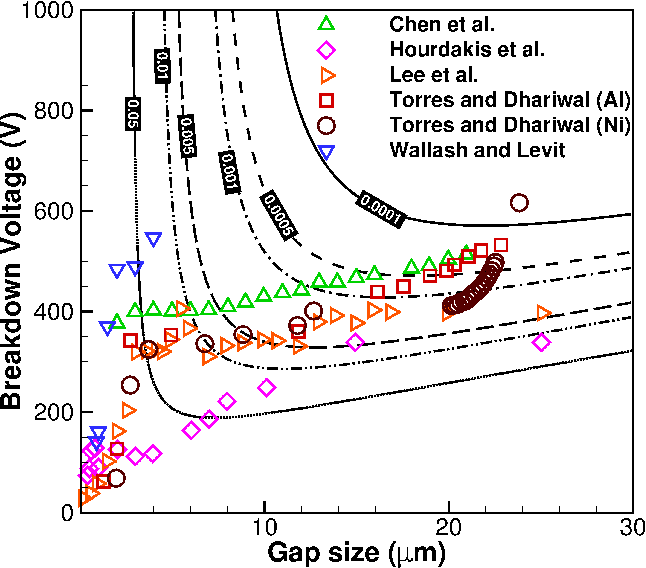

In this letter, we obtain a better understanding of effective field enhancement factors (β eff) in the context of microscale gas breakdown with specific emphasis on its dependence on applied electric field. The theoretical dependence of β eff on electric field for various hemi-ellipsoidal asperities indicates that the value of β eff decreases with increasing electric field. The interpretation of experimental data using a typical one-dimensional modified Paschen law indicates a qualitatively similar electric field dependence even though the data could not be completely explained using a single effective asperity size. The values of β eff extracted from seven independent experimental datasets for microscale breakdown of argon and air are shown to be consistent and an empirical dependence on electric field is determined.
Physics of Plasmas, 22, 100701, 2015
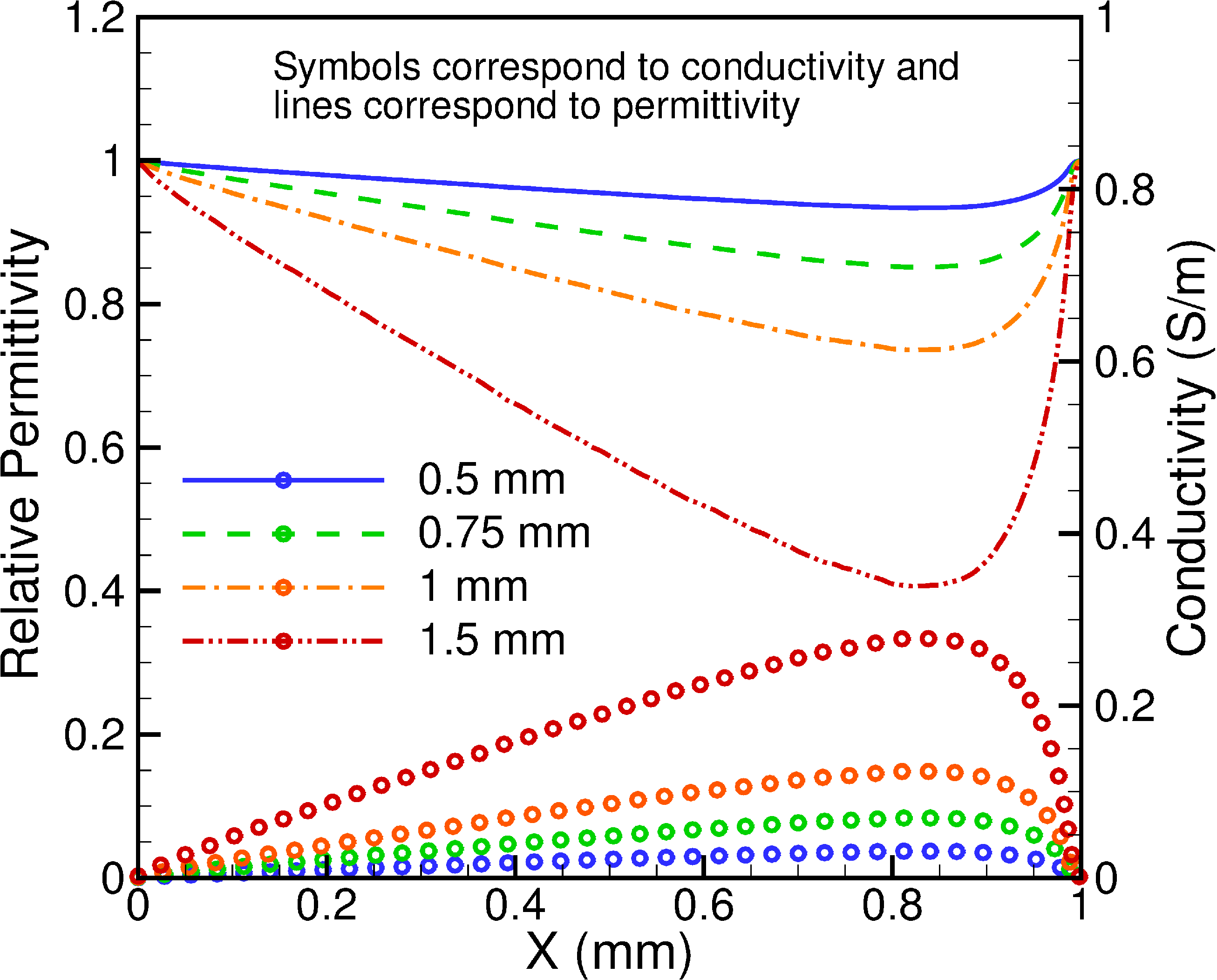
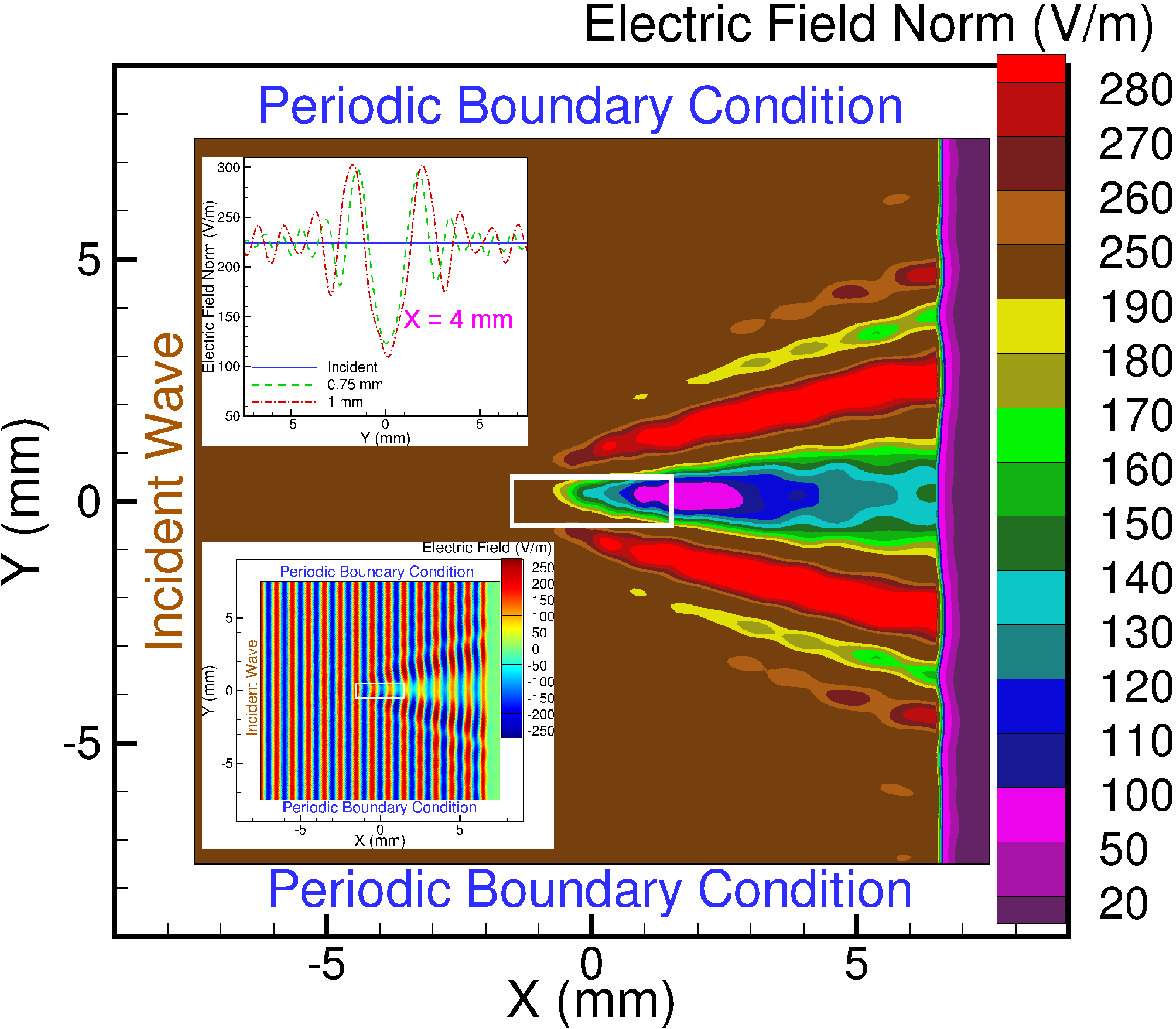
This work presents proof of concept of a novel application of field emission assisted (FEA) microplasmas that exploits the relatively high plasma number densities encountered in these devices. We hypothesize that the number density gradients and the resulting gradient in the microplasma relative permittivity/refractive index can be utilized as a tunable diverging lens with on/off ability to defocus waves in the Terahertz regime. Electron number density profiles obtained from one-dimensional particle-in-cell with Monte Carlo collisions simulations for a typical FEA microplasma are used to determine the relative permittivity and conductivity profiles. Frequency domain wave propagation simulations using these profiles show that sub-mm waves can be controlled using the microplasma lens with the degree of defocusing depending on the wavelength. In spite of the non-zero conductivity, the medium is not significantly lossy at the frequencies considered.
Physics of Plasmas, 22, 057102, 2015
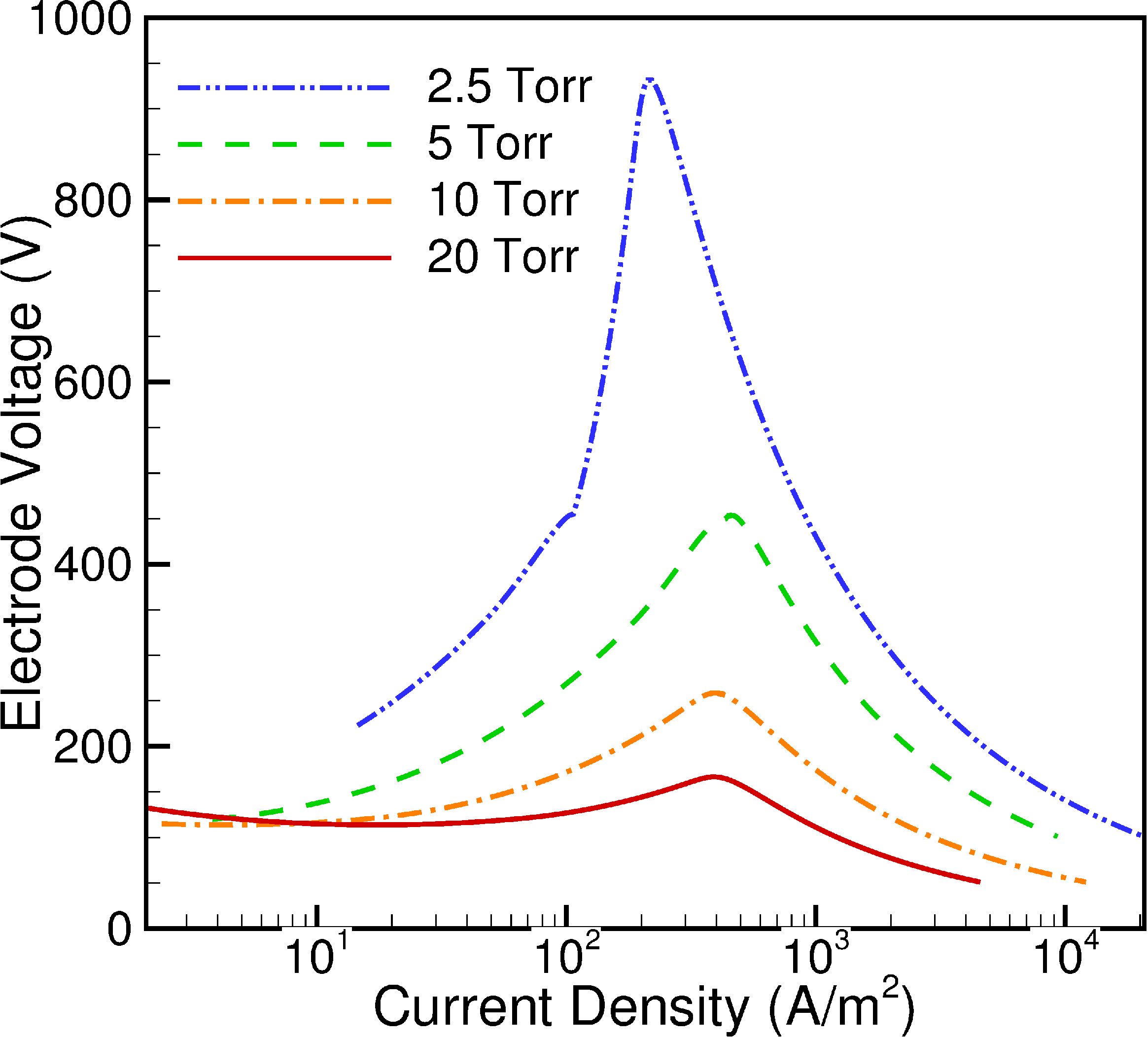
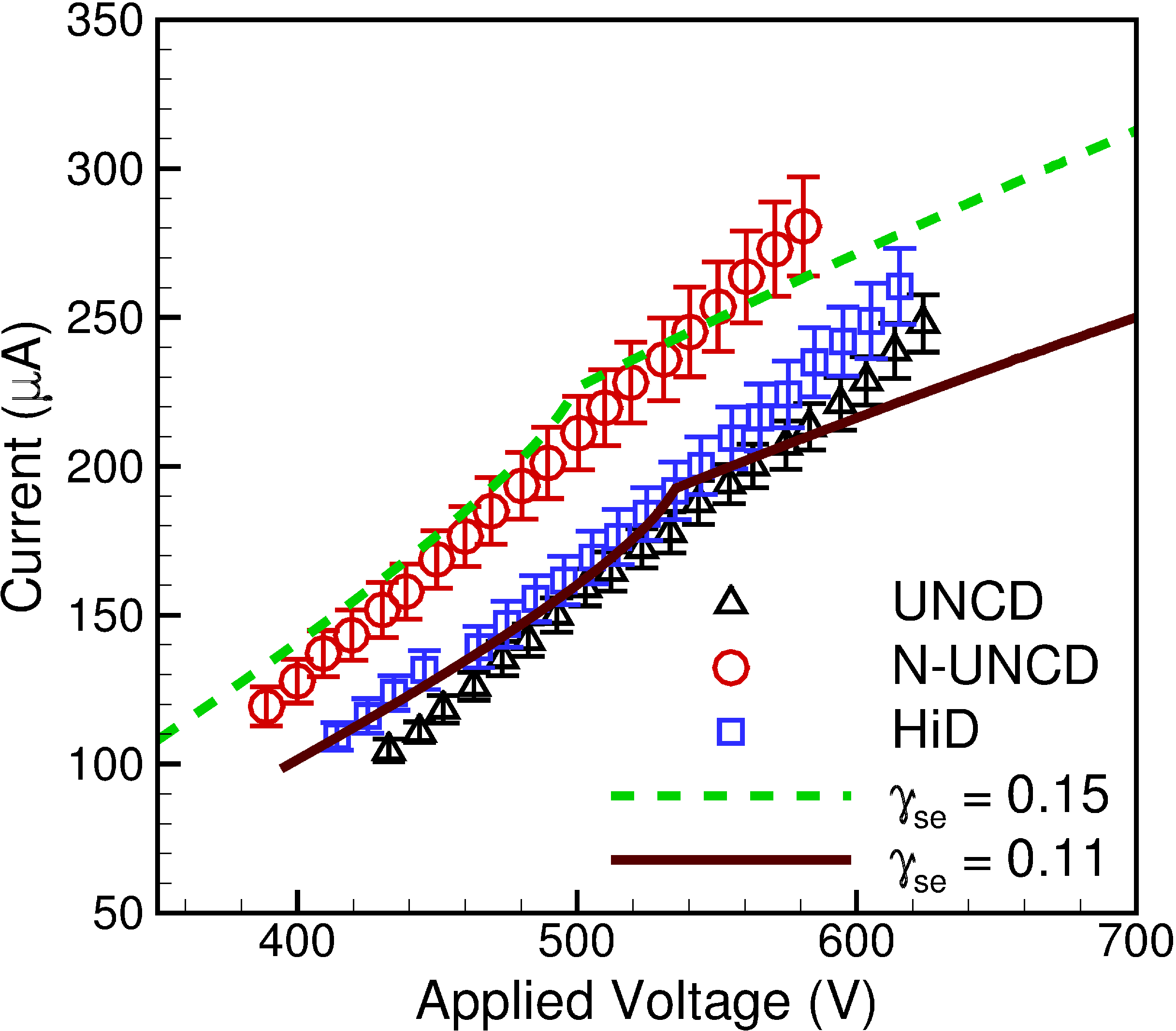
Motivated by the recent interest in the development of novel diamond-based cathodes, we study microplasmas assisted by field emitting cathodes with large field enhancement factors using a simplified model and comparisons with particle-in-cell with Monte Carlo collision (PIC-MCC) simulations and experiments. The model used to determine current-voltage characteristics assumes a linearly varying electric field in the sheath and predicts transition from an abnormal glow to arc mode at moderate current densities in a 1 mm argon gap. The influence of an external circuit is also considered to show the dependence of current as a function of the applied voltage, including potential drop across external resistors. PIC-MCC simulations confirm the validity of the model and also show the significant non-equilibrium nature of these low-temperature microplasmas with electron temperatures ∼1 eV and ion temperatures ∼0.07eV in the quasi-neutral region. The model is also used to explain experimental data reported for a 1 mm argon gap at a pressure of 2 Torr using three different diamond-based cathodes with superior field emitting properties. The comparison shows that operating conditions in the experiments may not result in significant field emission and the differences observed in current-voltage characteristics can be attributed to small differences in the secondary electron emission coefficient of the three cathodes. However, the model and simulations clearly indicate that field emission using novel cathodes with high field enhancement factors can be used to enhance microplasmas by significantly decreasing the power requirements to achieve a given plasma number density even in gaps at which field emission is traditionally not considered to be a dominant mechanism.
Journal of Physics D: Applied Physics, 47, 425205, 2014
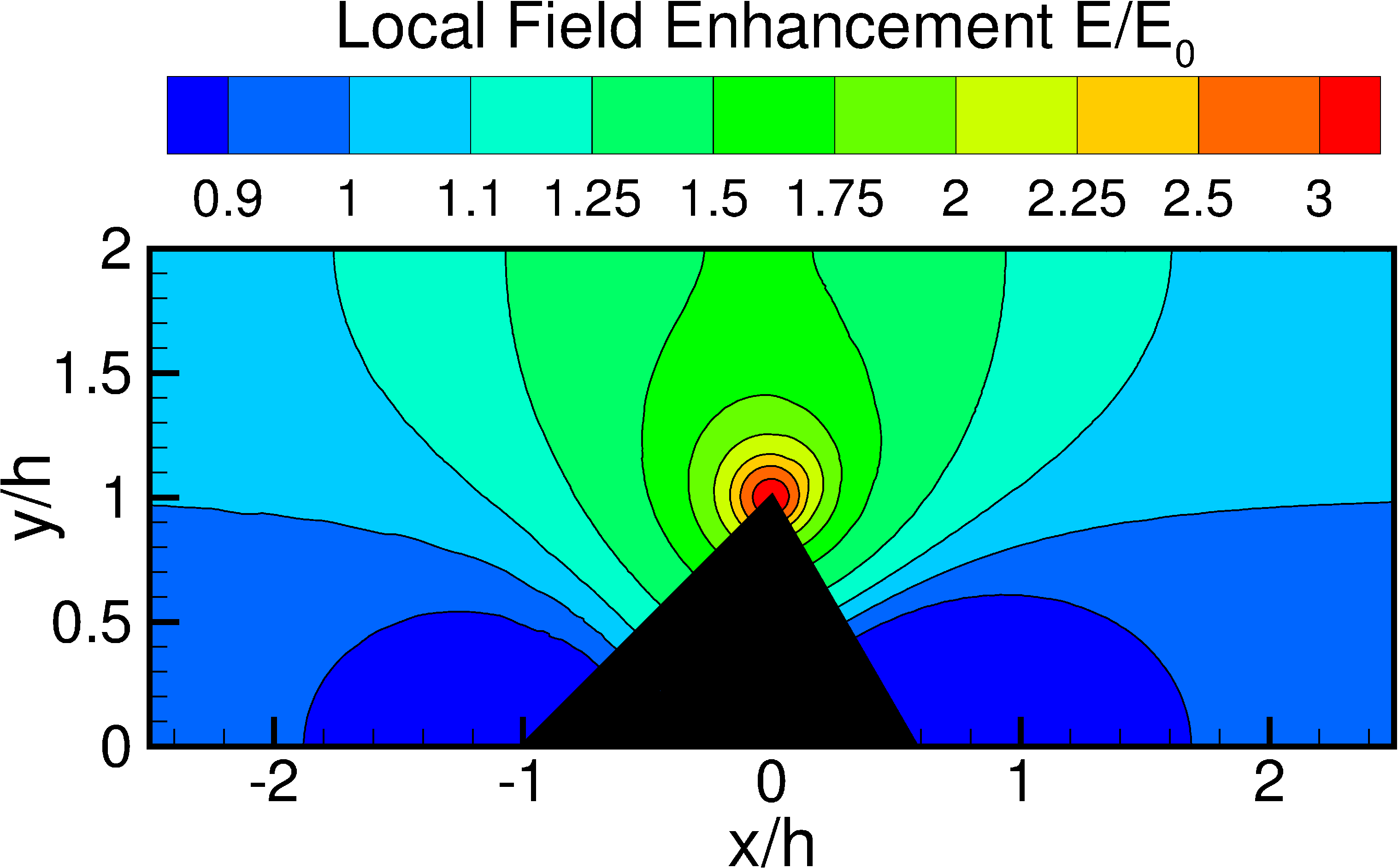

The electric field enhancement due to an isolated saw-tooth asperity in an infinite channel is considered with the goal of providing some inputs to the choice of field enhancement factors used to describe microscale gas breakdown. The Schwarz–Christoffel transformation is used to map the interior of the channel to the upper half of the transformed plane. The expression for the electric field in the transformed plane is then used to determine the electric field distribution in the channel as well as field enhancement near the asperity. The effective field enhancement factor is determined and its dependence on operating and geometrical parameters is studied. While the effective field enhancement factor depends only weakly on the height of the asperity in comparison to the channel, it is influenced significantly by the base angles of the asperity. Due to the strong dependence of field emission current density on electric field, the effective field enhancement factor (βeff) is shown to vary rapidly with the applied electric field irrespective of the geometrical parameters. This variation is included in the analysis of microscale gas breakdown and compared with results obtained using a constant βeff as is done traditionally. Even though results for a varying βeff may be approximately reproduced using an equivalent constant βeff independent of E-field, it might be important for a range of operating conditions. This is confirmed by extracting βeff from experimental data for breakdown in argon microgaps with plane-parallel cathodes and comparing its dependence on the E-field. While the use of two-dimensional asperities is shown to be a minor disadvantage of the proposed approach in its current form, it can potentially help in developing predictive capabilities as opposed to treating βeff as a curve-fitting parameter.
Applied Physics Letters, 104, 194101, 2014
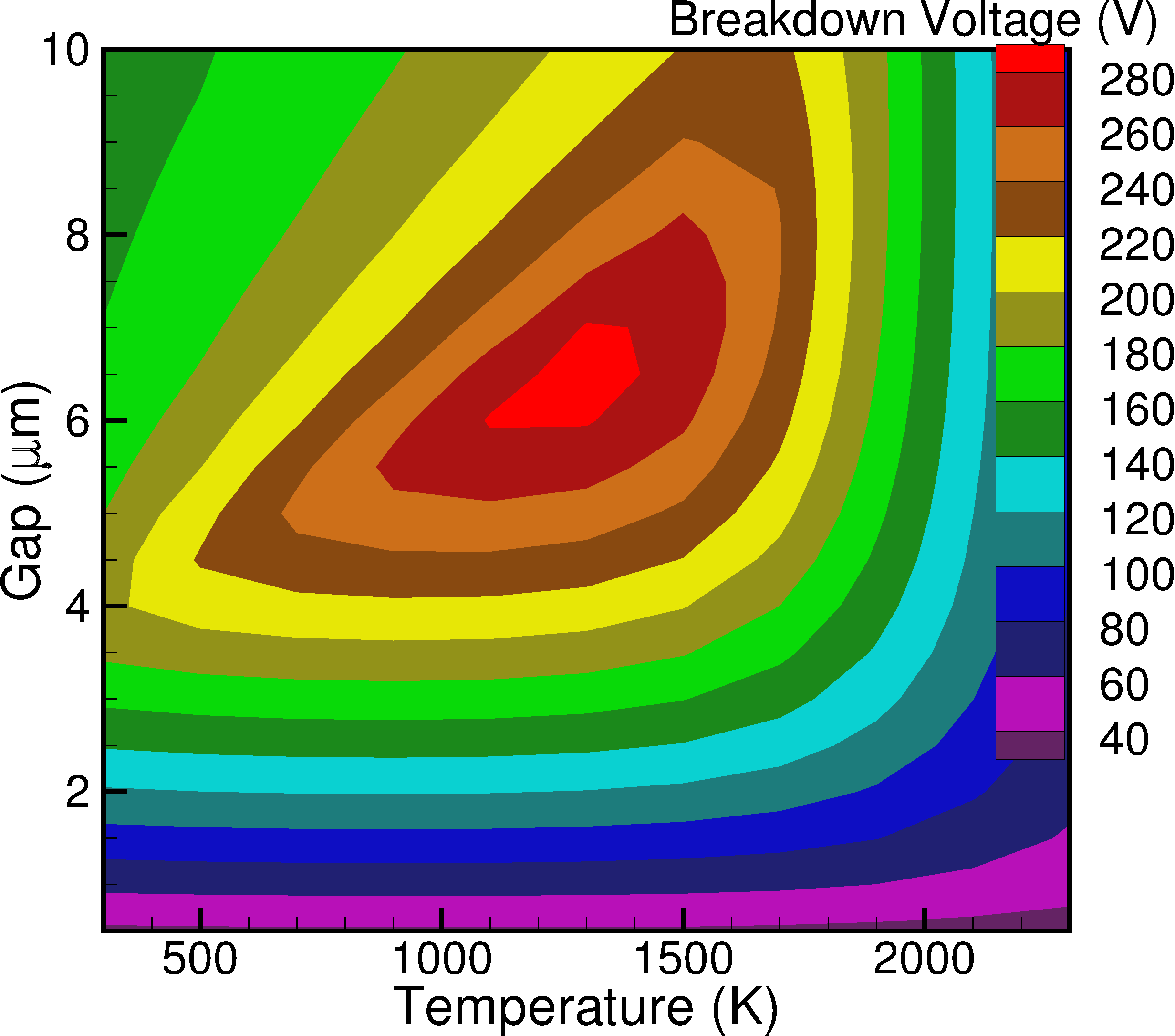
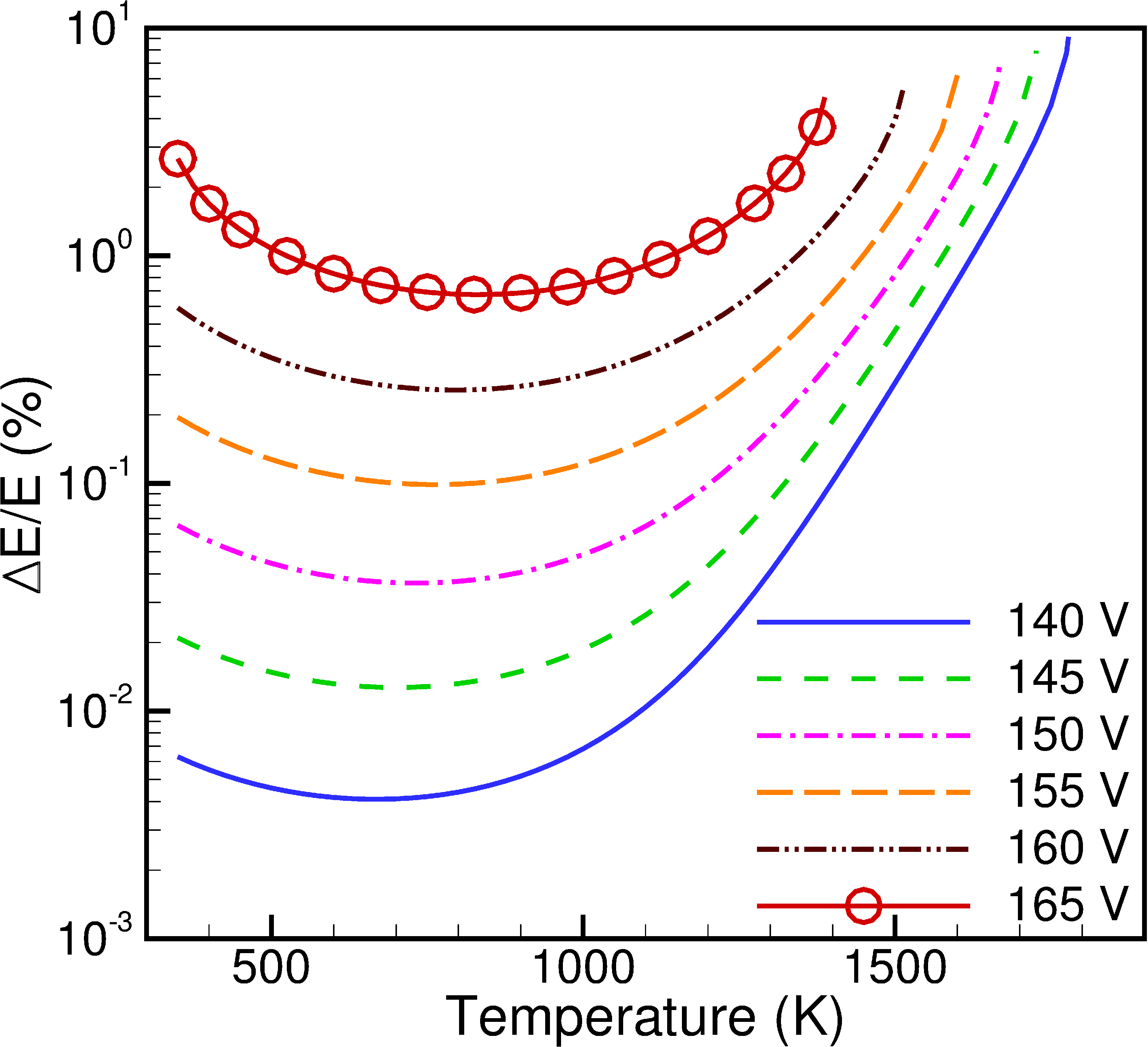
Microdischarges operating in an ambient gas with both thermionic and field emission from the cathode are considered theoretically to predict pre-breakdown current density vs voltage as well as breakdown voltages. The integrals in the thermo-field current density expression lead to a breakdown criterion that does not have a simple closed-form and requires the use of optimization techniques to obtain the breakdown voltage. The breakdown voltage is shown to be a non-monotonic function of both cathode temperature and gap size. The proposed framework can be applied with no additional effort to gas breakdown driven by other cathode emission mechanisms.